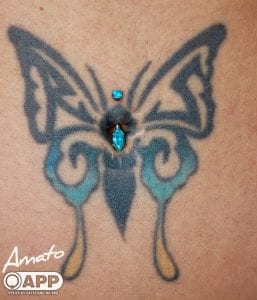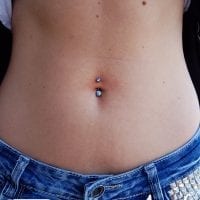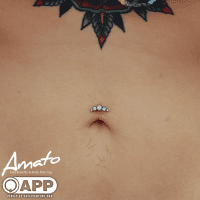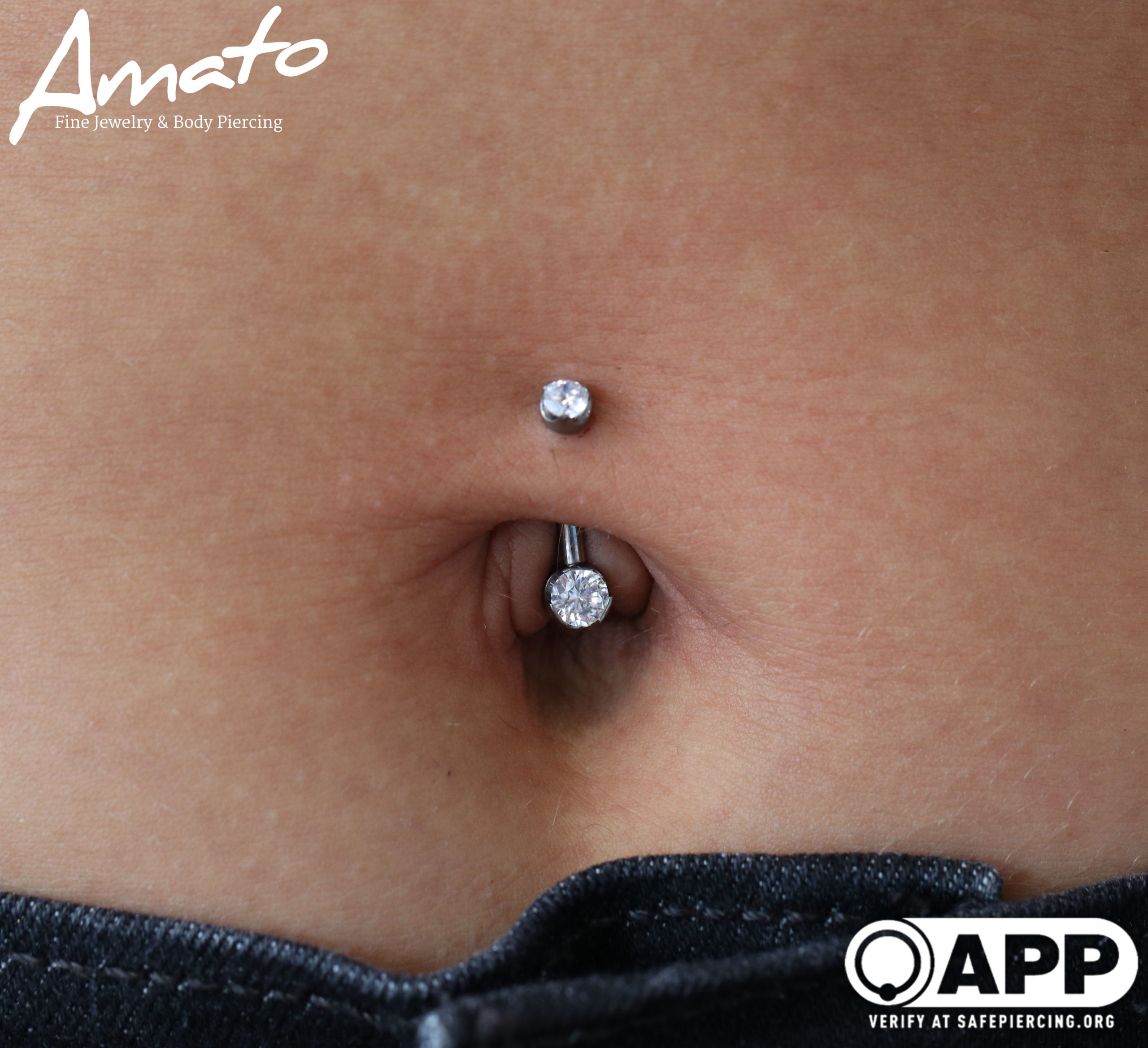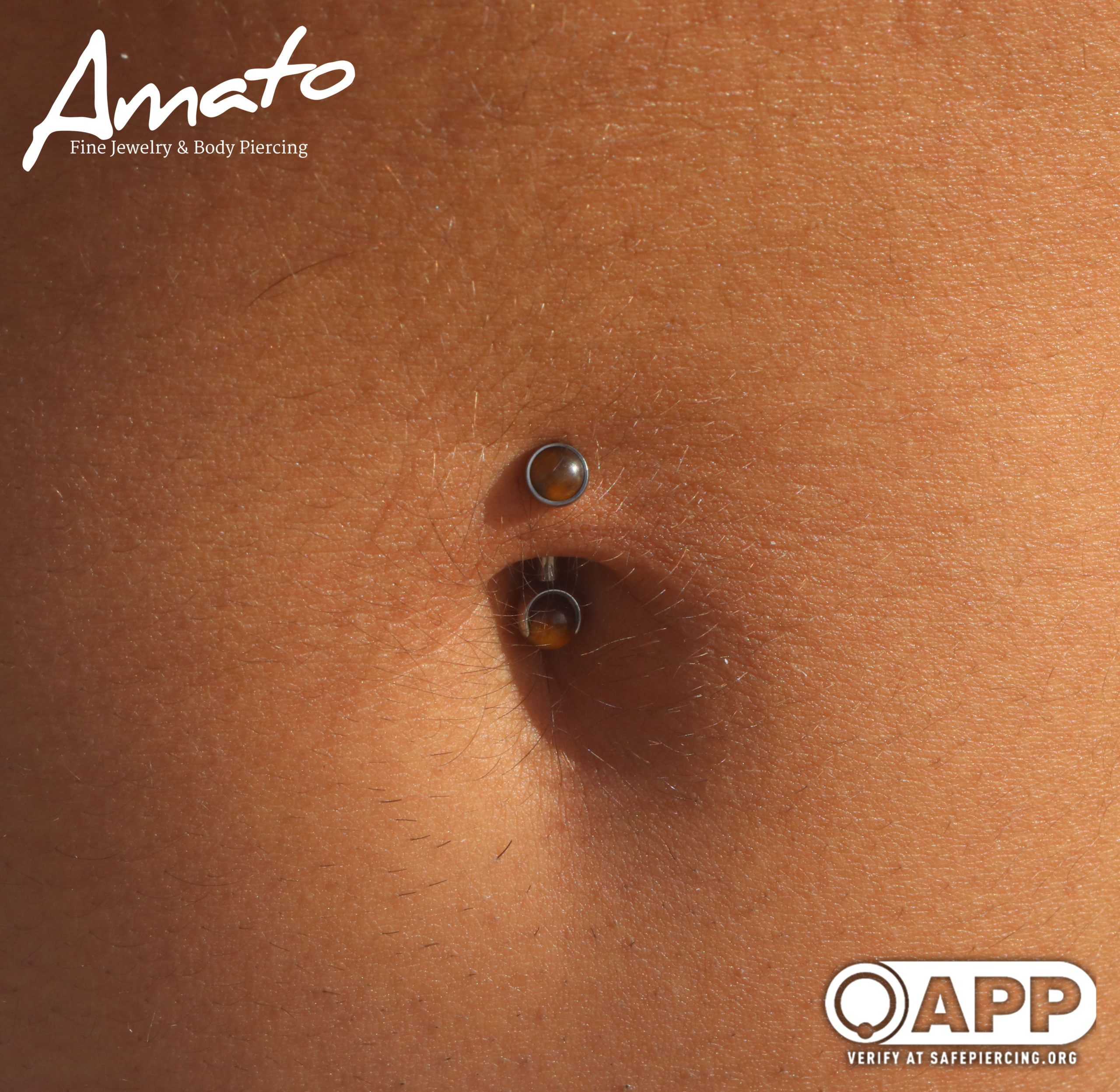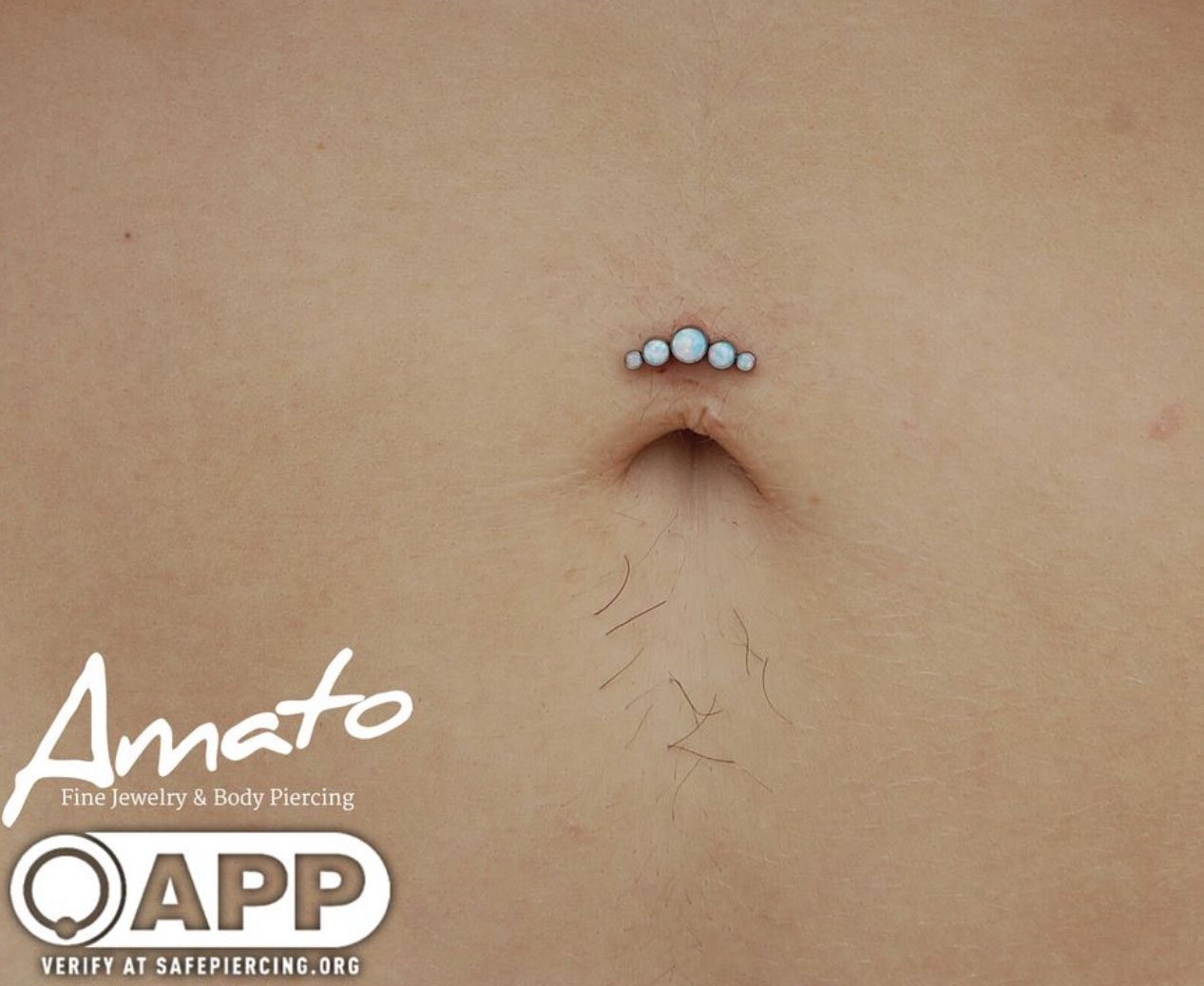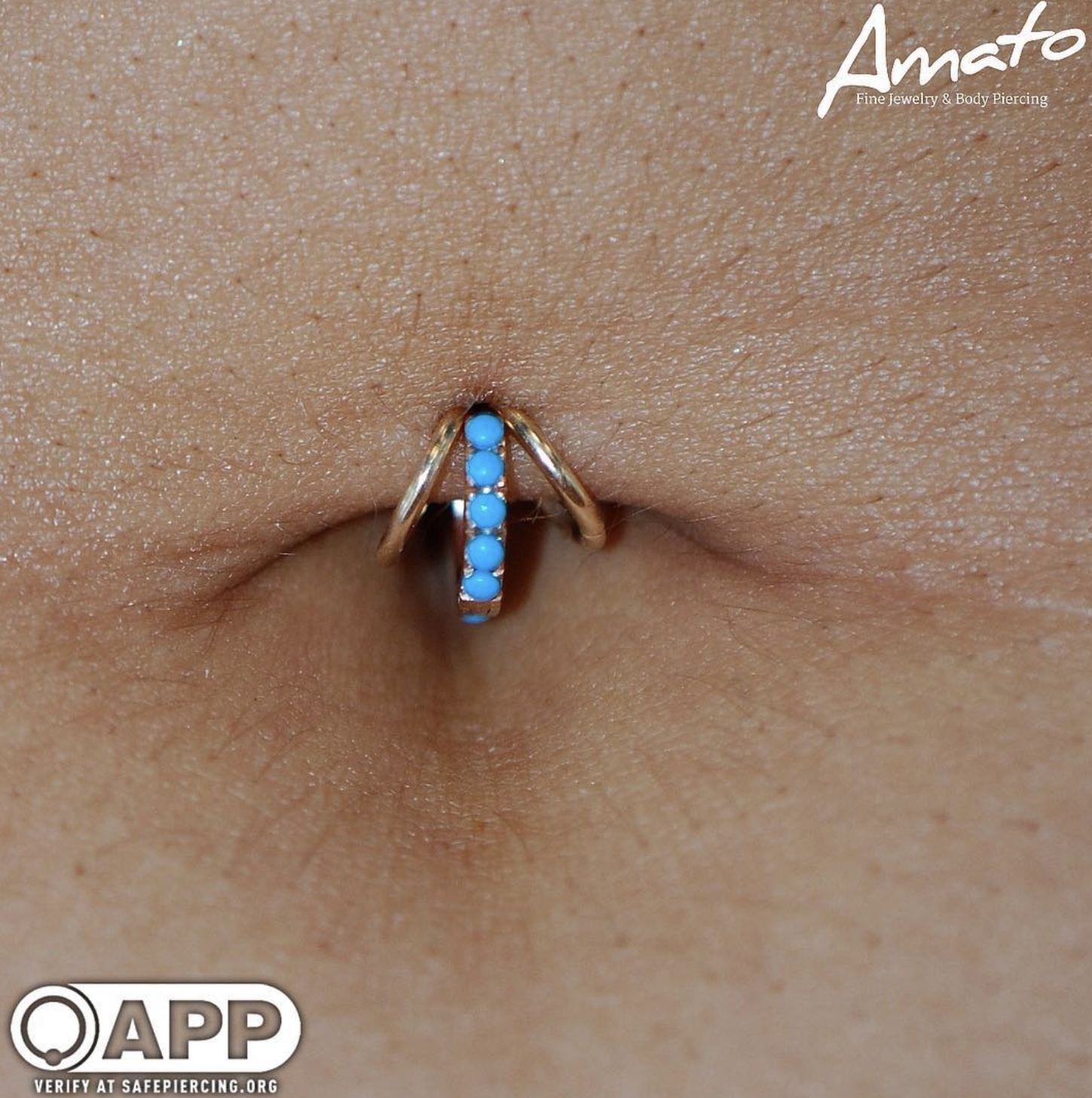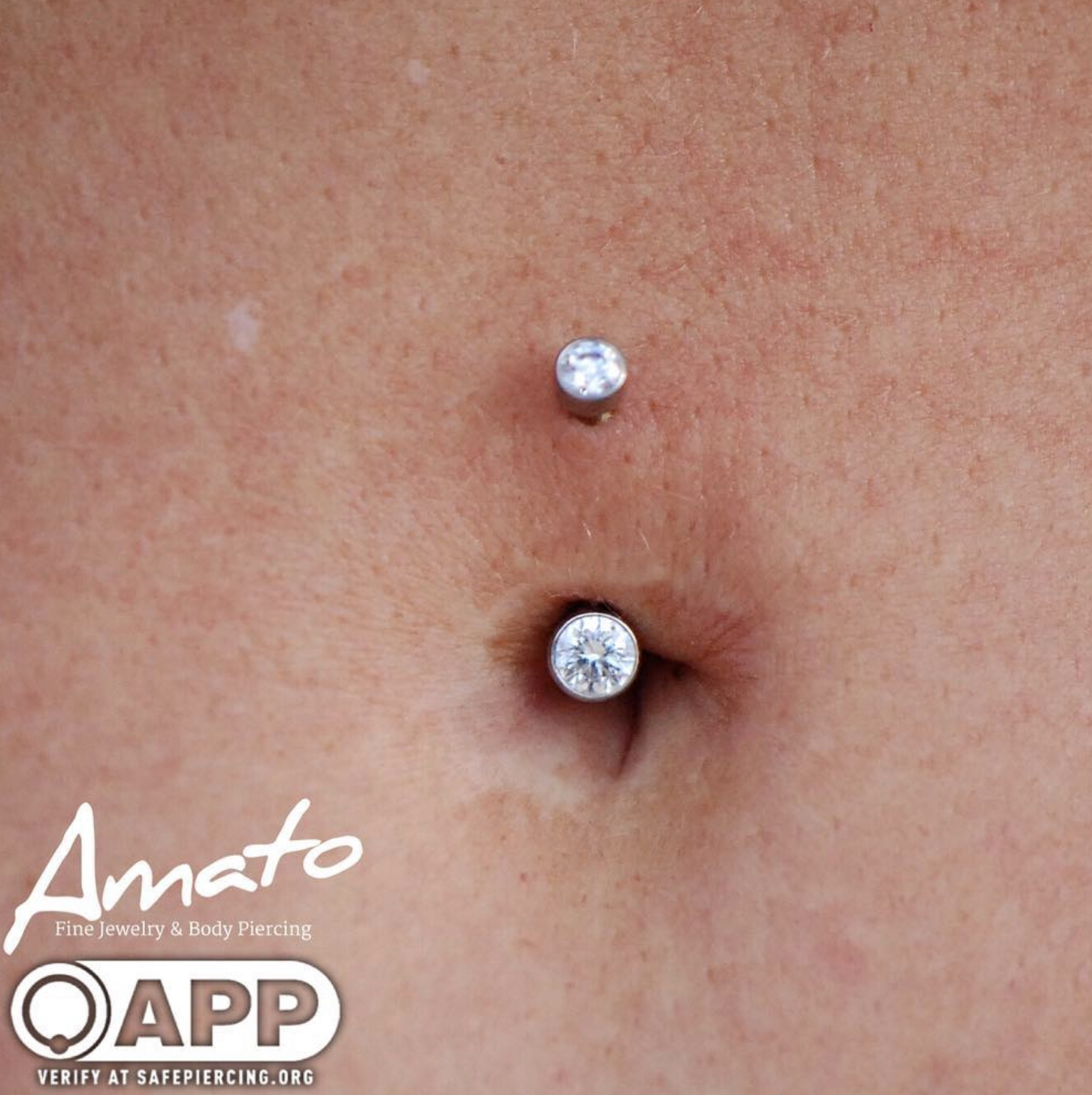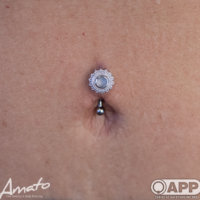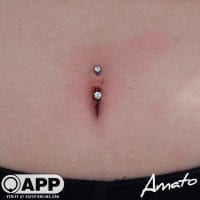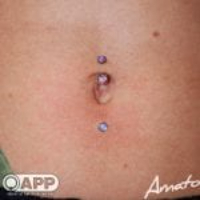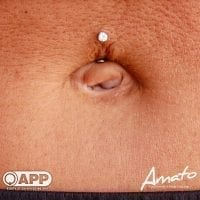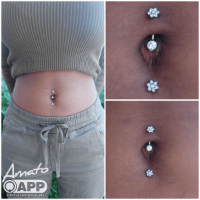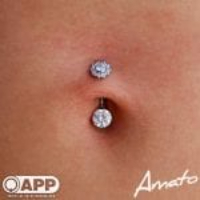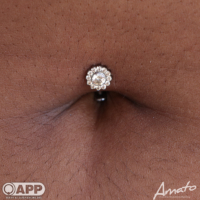-
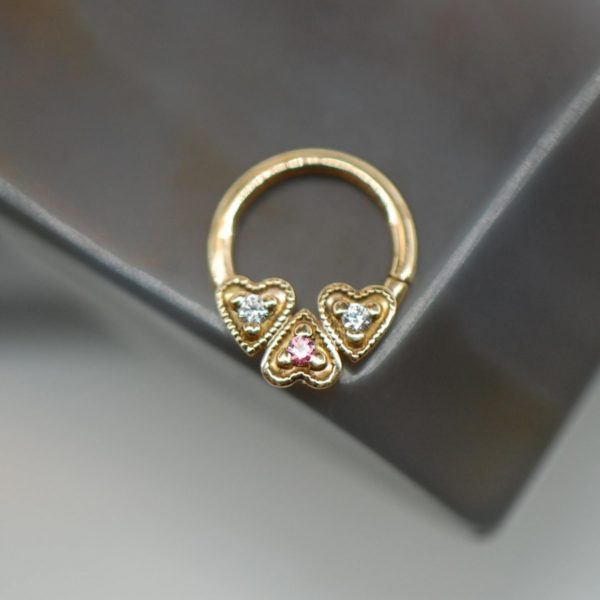 Triple Heart Seam Ring
Triple Heart Seam Ring
$200.00Original price was: $200.00.$175.00Current price is: $175.00. -
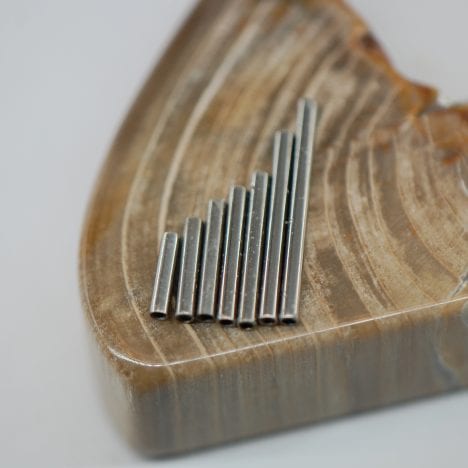 14g Internally Threaded Straight Barbell
$20.00
14g Internally Threaded Straight Barbell
$20.00
-
 14g Internally Threaded Curved Barbell
$30.00
14g Internally Threaded Curved Barbell
$30.00
-
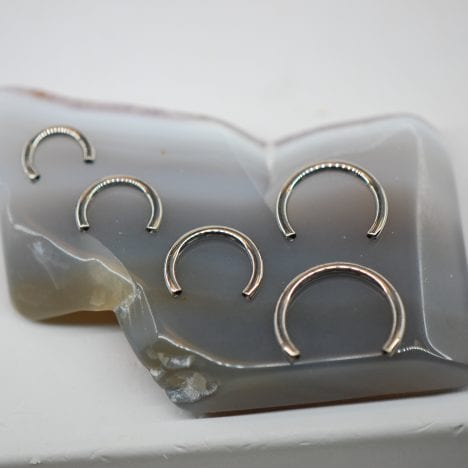 14g Circular Barbell
$35.00
14g Circular Barbell
$35.00
Navel piercings are one of the more popular piercings we do here. Going through the top, and occasionally the bottom lip of the navel, these cute, popular piercings are well liked. Navel piercings are rather anatomy dependent, and she shape, size, and movement of your navel can change the jewelry choices you will have to wear. Here at Amato we see two styles of navel piercings regularly. A traditional navel, and a floating navel. Traditional navels are what most are used to seeing- a curved barbell with a small gem on top and a larger genavel and nosem inside the navel. They work on anyone with a pronounced ‘lip’ or ridge of tissue across the top of their navel, and a navel that retains its shape when they sit, stand, and lay down. Even then, some folks navels’ are small enough that they may be limited in what sizes of jewelry they can comfortably wear.
Floating navels we do on clients who still have a viable ‘lip’ of tissue, but whose navels change shape as they move. Often, when these people sit, stand, and lay, their navels will compress from a round shape to an oval, and back again as they move. With this navel, we start these piercings with a curved barbell with a small disc or ball on the bottom, and an ornate gem or shape on top. The small bead on the bottom doesn’t get pushed or shifted as the person moves, sits, and stands. A traditional piece of jewelry would be compressed by the movement of a navel. Once healed, we can often get these clients into pieces of jewelry more similar to a traditional navel. We are so exact with anatomy for this piercing, because they can be tricky to heal. These piercings take 6-9 months to heal, and because of there location are more easily caught, snagged, or rubbed by clothing. That is something to keep in mind before getting one. Also- if you are looking for a nice pretty navel to show off while swimming in pools or oceans in the summer, consider getting your piercing in fall or winter so it is fully healed for summer fun.
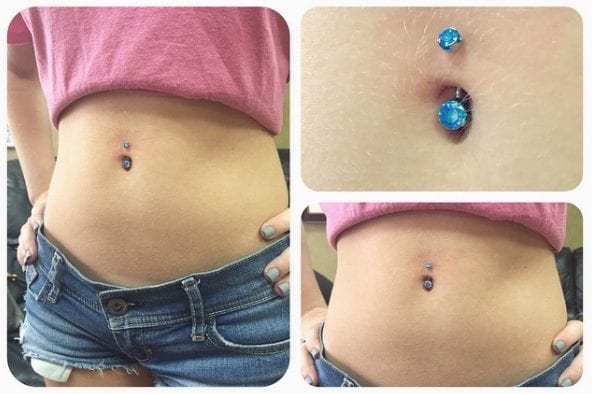
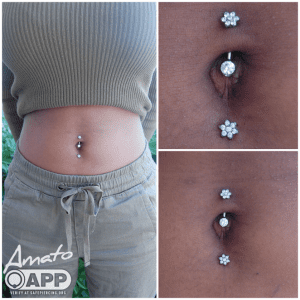
Can you pierce my outie navel?
It’s not a good idea to pierce the actual protruding portion of an outie navel. The navel is formed by scar tissue from cutting the umbilical chord, and an outie is much more complex tissue then the simple lip of skin over a normal piercing. This means any butterfly-navel complications with a piercing through an outie can become more serious, quicker. However, some folks with outie navels still have a lip of tissue above (or below) the outie, which can still be pierced. We suggest coming in for a consult with one of our experienced piercers to see if you are
Will you pierce the bottom of my navel?
These are very anatomy dependent, but if you have the right shape (that defined lip) we would be happy to!
What happens if I get pregnant?
There are a few choices if you become pregnant with a navel piercing, and they will depend heavily on the individual pregnancy. Some mothers choose to remove the piercing right away, and have it redone once the pregnancy is over. Depending on how long you’ve had the piercing, it may not even close and jewelry can still be inserted easily. Other mothers choose to wear it as long as is comfortable. That said, often times we see the skin over the piercing thin out after a pregnancy. Once pregnancy is over sometimes this causes no issue, sometimes it means the mother will find herself wearing shorter barbells then before, and sometimes it is so thin it would be unsafe to wear the piercing again. In that case it’s usually possible to redo the piercing at a proper depth, behind the original one.
When can I go swimming?
We suggest waiting till the piercing is fully healed, so 6-9 months. Before that, in temporary situations a tegaderm waterproof bandage can be used to safely swim for short periods. These can be bought at any drugstore. Just make sure to clean your piercing thoroughly after, and avoid applying the adhesive directly to the jewelry or piercing.

